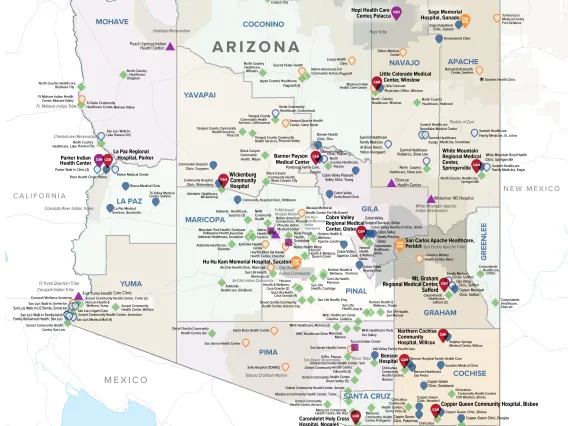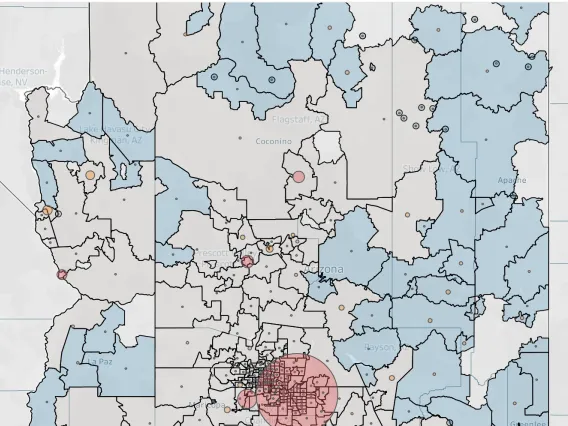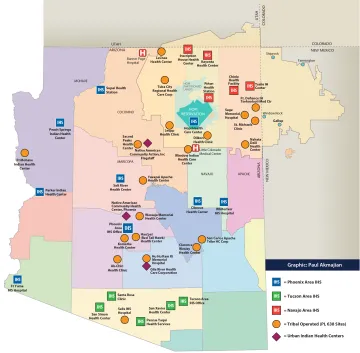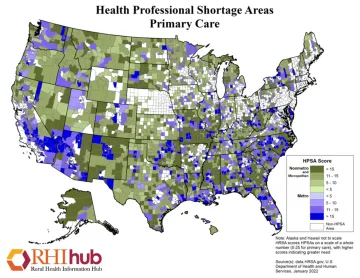Arizona Maps

Arizona's Rural Health Safety Net
Arizona Critical Access Hospitals, IHS and Tribal Facilities, Rural Health Clinics, FQHCs (updated August 2024)

Arizona County Level Rural-Urban Classifications
Classifications based on 2010 Census Data.

» Visit the AZCRH ArcGIS Hub for interactive Health Workforce Data and Analysis Maps and Applications
- Indian Health Service Hospitals, Tribal Operated (PL 638) sites and Urban Indian Health Centers in Arizona
- Internet, Computer, and Smartphone Access in Arizona: This GIS interactive map uses U.S. Census, American Community Survey data from 2017 to map access to household computers, broadband internet access, and smartphones . This is at the census tract level, so zoom in to see the data for metropolitan areas. This map created by Kara Haberstock Tanoue, Community Research, Evaluation, & Development (CRED) Team, Norton School of Family & Consumer Sciences, University of Arizona.
- Hospitals, Clinics, and Population Density in Arizona

The Bureau of Health Systems Development (HSD) provides several resources free-of-charge to the public in an effort to support the expansion of primary care services and to reduce health disparities throughout Arizona. The data, reports and maps available through HSD are useful for grant writing, needs assessments, resource prioritization and other health planning initiatives.
Maps include:
The Atlas of Rural and Small-Town America provides statistics by broad categories of socioeconomic factors:
- People: Demographic data from the American Community Survey (ACS), including age, race and ethnicity, migration and immigration, education, household size, and family composition.
- Jobs: Economic data from the Bureau of Labor Statistics and other sources, including information on employment trends, unemployment, and industrial composition of employment from the ACS.
- County classifications: Categorical variables including the rural-urban continuum codes, economic dependence codes, persistent poverty, persistent child poverty, population loss, onshore oil/natural gas counties, and other ERS county typology codes.
- Income: Data on median household income, per capita income, and poverty (including child poverty).
- Veterans: Data on veterans, including service period, education, unemployment, income, and other demographic characteristics.


